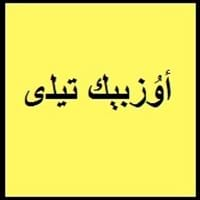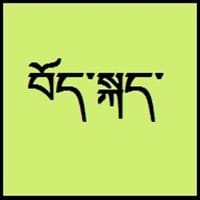Countries
Turkey, Uzbekistan
China, Nepal
National Language
Afganistan, China, Kazakhstan, Kyrgyzstan, Russia, Tajikistan, Turkmenistan, Uzbekistan
Nepal, Tibet
Second Language
Not spoken in any of the countries
Not spoken in any of the countries
Speaking Continents
Middle East
Asia
Minority Language
Not spoken in any of the countries
China, India, Nepal
Regulated By
Not Available
Committee for the Standardisation of the Tibetan Language
Interesting Facts
- Uzbek is officially written in the Latin script, but many people still use Cyrillic script.
- In Uzbek language, there are many loanwords from Russian, Arabic and Persian.
- Tibetan dialects vary alot, so it's difficult for tibetans to understand each other if they are not from same area.
- Tibetan is tonal with six tones in all: short low, long low, high falling, low falling, short high, long high.
Similar To
Kazakh and Uyghur Languages
Not Available
Derived From
Not Available
Not Available
Alphabets in
Uzbek-Alphabets.jpg#200
Tibetan-Alphabets.jpg#200
Scripts
Arabic, Cyrillic, Latin
Tibetan alphabet, Tibetan Braille
Writing Direction
Not Available
Left-To-Right, Horizontal
Hello
Salom
བཀྲ་ཤིས་བདེ་ལེགས། (tashi delek)
Thank You
Rakhmat
ཐུགས་རྗེ་ཆེ་། (tujay-chay)
How Are You?
Qalay siz?
ཁྱེད་རང་སྐུ་གཇུགས་བདེ་པོ་ཡིན་པས།
(kayrang kusu debo yimbay?)
Good Night
Hayirli tun
གཟིམ་ལཇག་གནང་དགོས་། (sim-jah nahng-go)
Good Evening
Hayirli kech
དགོང་དྲོ་བདེ་ལེགས།
Good Afternoon
Hayirli kun
ཉིན་གུང་བདེ་ལེགས།
Good Morning
Hayirli tong
སྔ་དྲོ་བདེ་ལེགས། (nga-to delek)
Please
Iltimos
thu-je zig / ku-chee.
Sorry
Kechiring!
ཀོང་དགས་། (gawn-da)
Bye
Xayr
ག་ལེར་ཕེབས་། (kha-leh phe)
I Love You
Sizni sevaman
ང་ཁྱེད་རང་ལ་དགའ་པོ་ཡོད་ (nga kayrâng-la gawpo yö)
Excuse Me
Iltimos! Menga qarang
དགོངས་དག བཟོད་དུ་གསོལ། ཐུགས་རྗེ་གཟིགས།
Dialect 1
Tashkent
Central Tibetan
Where They Speak
Not Available
China, India, Nepal
How Many People Speak
Not Available
Dialect 2
Afghan
Khams Tibetan
Where They Speak
Not Available
Bhutan, China
How Many People Speak
Not Available
Dialect 3
Ferghana
Amdo Tibetan
Where They Speak
Not Available
China
How Many People Speak
Not Available
Speaking Population
Not Available
Native Name
أۇزبېك ﺗﻴﻠی o'zbek tili ўзбек тили (o‘zbek tili)
བོད་སྐད་ (pö-gay)
Alternative Names
Annamese, Ching, Gin, Jing, Kinh, Viet
Bhotia, Dbus, Dbusgtsang, Phoke, Tibetan, U, Wei, Weizang, Zang
French Name
ouszbek
tibétain
German Name
Usbekisch
Tibetisch
Pronunciation
Not Available
Not Available
Ethnicity
Uzbek
tibetan people
Origin
9th–12th centuries AD
c. 650
Language Family
Turkic Family
Sino-Tibetan Family
Subgroup
Turkic
Tibeto-Burman
Branch
Southestern(Chagatai)
Not Available
Early Forms
Chagatay
Old Tibetan, Classical Tibetan
Standard Forms
Uzbek
Standard Tibetan
Language Position
Not Available
Signed Forms
Not Available
Tibetan Sign Language
Scope
Macrolanguage
Not Available
ISO 639 6
Not Available
Not Available
Glottocode
uzbe1247
tibe1272
Linguasphere
No data available
No data Available
Language Type
Living
Not Available
Language Linguistic Typology
Not Available
Not Available
Language Morphological Typology
Not Available
Not Available
All Uzbek and Tibetan Dialects
Most languages have dialects where each dialect differ from other dialect with respect to grammar and vocabulary. Here you will get to know all Uzbek and Tibetan dialects. Various dialects of Uzbek and Tibetan language differ in their pronunciations and words. Dialects of Uzbek are spoken in different Uzbek Speaking Countries whereas Tibetan Dialects are spoken in different Tibetan speaking countries. Also the number of people speaking Uzbek vs Tibetan Dialects varies from few thousands to many millions. Some of the Uzbek dialects include: Tashkent, Afghan. Tibetan dialects include: Central Tibetan , Khams Tibetan. Also learn about dialects in South American Languages and North American Languages.
Uzbek and Tibetan Speaking population
Uzbek and Tibetan speaking population is one of the factors based on which Uzbek and Tibetan languages can be compared. The total count of Uzbek and Tibetan Speaking population in percentage is also given. The percentage of people speaking Uzbek language is 0.39 % whereas the percentage of people speaking Tibetan language is Not Available. When we compare the speaking population of any two languages we get to know which of two languages is more popular. Find more details about how many people speak Uzbek and Tibetan on Uzbek vs Tibetan where you will get native speakers, speaking population in percentage and native names.
Uzbek and Tibetan Language Codes
Uzbek and Tibetan language codes are used in those applications where using language names are tedious. Uzbek and Tibetan Language Codes include all the international language codes, glottocodes and linguasphere.





